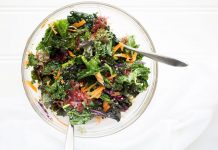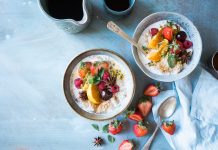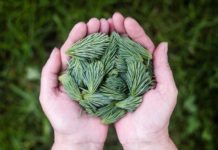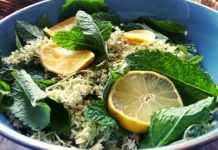How to achieve body balance with fish oil – Part 1
”Can’t I just eat healthy?”
It was an essential question at a congress I attended in 2015. Congress focused on omega-6 and -3 and the importance of creating an optimal balance between the two fatty acids – in the body at the cellular level (read part 1 on why the balance between omega-6 and omega-3 is important for your health). The lecturer was one of the leading researchers in human nutrition, namely Dr. Paul Clayton. The theme of the day was inflammation in relation to omega-3 intake and here came the question:”Can not you just make do with eating really healthy?”
Most people think of course that if you make sure to get plenty of green, this nuts and seeds and healthy oils, so you live the healthy. The response from Dr. Paul Clayton said:Yes and no! Briefly, told Dr. Paul Clayton that for young people up to approx. 35 years, it is usually no problem. But when you have passed about 35 years old, problems begin gradually as the inflammation that gives us the lifestyle diseases we see a wide range of. It is here, in the mature years, lifestyle diseases are beginning to come:Cardiac and vascular disorders, type 2 diabetes, aching muscles and joints, back pain, arthritis, migraine, headache, hair and skin disorders, psoriasis /eczema etc. He compares inflammations with a “fire” in the body, a condition in which our organism with years is becoming more difficult to combat.
Dr. Paul Clayton pointed out the importance of providing for an omega-3 supplements of high quality. Omega-3 balance the dietary imbalance that we have today. The body needs both omega-3 and omega-6 fatty acids, but the modern Western diet we have today contain too much omega-6 and too little omega-3.
A good illustration of this is a rocker with a big red omega-6 ball and a little green omega-3 ball. One can achieve balance /equilibrium by minimizing the red or make the green larger – or do both simultaneously. He describes, inter alia, in his book:”Out of the Flames”. If you get on top of a large grant of saturated fats from four-legged animals, this “fire” becomes worse.
The imbalance in Danmark and the US
The average omega 6/3 balance for European countries overall is 15:1 (LA/DHA+EPA), while it is 12:1 in Scandinavia. In the US, it is a whole lot worse. Here you measure omega 6/3 imbalances 40-50-60:1 – in bad cases even more. This is due to a diet based on excessive consumption of fast food – especially soya oil and, not least, combined with a large intake of saturated fats and sugary soft drinks.
As mentioned in my previous post (Part 1), we get in the diet, historically and originally, omega-6 fatty acids from plants and omega-3 fatty acids from everything that exists in the ocean – eg. from oily fish, sardines, anchovies, herring, mackerel, salmon, etc.
In order to balance these two omega-fatty acids must balance optimally be around 3:1 (omega-6/3). WHO recommends right now a balance of 2-5:1 or better. The Japanese health authorities recommend an omega 6/3 balance of 2:1.
The actual balance
An indicative average balance of various dietary choices:
- The omega-6/3 balance is optimally 3:1 or better
- Meat eater (eats in total): Balance approx. 7-12:1
- Vegetarian: Balance at 12:1 on average
- Vegetarian (eats eggs and dairy products regularly): Balance of 4-7:1
- Vegetarian (eats fish two three times per week, fish products daily, etc.): Balance 2 5:1
- Vegan: Balance of 12-20:1 on average.
The challenge of the vegan
The vegan diet consists only of green food. In addition there may be a part of the cooking – wherein the plant oils are used with high omega-6 subsidies for example. corn oil, sunflower oil, grape seed oil and soy products. In addition, some of these great omega-6 suppliers in large-scale finished vegan /cooked dishes, but also in bread, biscuits, cakes, etc.
Therefore, one can not claim that vega failed, guaranteed health by eating healthy green. The body of the building blocks of omega-3 fatty acids are too few. This is also documented by test. He or she may in principle be worse off than the vegetarian who may consume eggs and dairy products and thereby get fledgling omega-3 sources. Eg. contains eggs virtually everything except vitamin C and organic milk, butter, cheese, have a higher omega-3 content than the conventional product.
If you choose a vegan diet and thus an unbalanced lifestyle, choose not to a great extent what the human body through millions of years are designed to get as building blocks – namely, a balanced intake of dietary omega-3 (DHA + EPA) fatty acids the ocean. Ur-stage is a balance of 1:1.
You live vegan and do not care to get his diet balanced with a large contribution of the health omega-3 fatty acids, so lay the foundations of an inflammatory/unbalanced lifestyle early and reap the result of a more mature age or later in life. One possible consequence may be the insertion of inflammations and diseases of civilization thereof.
Therefore, the omega-3 deficit is as big in the vegan
The average vegan has an omega-6/omega-3 imbalance of up to 20:1 (!). Thus an omega-6 intake that is 20 times higher than omega-3. It should be 3:1 or better. An imbalance of 20:1 indicates, therefore, a lifestyle and a diet choices one would describe as strongly pro-inflammatory. If you choose to ethical or other reasons a vegan diet choices, this also applies to vegetarians, so does most therefore to get enough omega-3 fatty acids come from omega-3 fatty acid chain; Alpha-linolenic acid (ALA).
Explanation is extensive here, but briefly, metabolic and enzymatic processes in the body even very little effective to form the coveted omega-3 fatty acids EPA/DHA directly from just ALA, which we here call the “green” omega-3 source.
Research shows that only a few percent of the green sources forming what vega transferee need and thus lacking in his diet; namely the important supplements of omega-3. This means that although vega failed eat vegetables and consume even mountains of healthy seeds and oils from such. hemp seeds, chia, flax, evening primrose and others, it does not help much when the conversion from the first step of ALA chain – omega-3 – EPA /DHA is extremely low.
The green dilemma
As a vegan – and partly also vegetarian – it is believed the dietary covered with healthy green, beans, nuts, seeds and the claimed “healthy oils”. These healthy food items can be on the one hand, in fact, not effectively utilized for the formation of a sufficiently high omega-3 fatty acid amount. On the other hand, the green diet ultimately contribute to an excessively high omega-6 levels.
This is the real dilemma. So if you have a permanent imbalance of omega-6/3, through a vegan /vegetarian lifestyle, you are actually just as likely to partake of the many lifestyle diseases like all other people.
A vegan and /or vegetarian lifestyle therefore problems in the long term:Many eat green and think themselves safe. The truth is simply that it is possible – because of the possible resulting inflammation – may be heading into the disease. You have chosen a “healthy lifestyle”, but you do not get what they developmentally are “designed” to having to eat, from the sea. Here lies the very core of understanding of why it’s health vital to maintain a high omega-3 levels in his diet – a lifetime!
Think of health damage to the body is many years to occur and that it is best to introduce the good habits in good time – not when the damage to the body already happened.
Omega-3 supplements restore the balance
If you choose to live as a vegan – and this aæsp applies to vegetarians – has thus far only been able to get a small portion of its omega-3 supplements covered from the very limited source that the plant sources poses.
In particular Vega has failed too long been referred to a narrow range of algal oil capsules. The problem is that virtually all of their claim /dosage gives a too small content of the health necessary DHA /EPA – and in a relationship where the important EPA is simultaneously high.
Generally, almost of these capsule products provides a very low dose of a recommended daily allowance. Herein lies the problem. If the dose is too low – particularly for EPA – it does not lead to any health benefit with regard to eliminating an optionally chronic inflammation. An optimal dose to be protect, if you live vegan should contain 500 to 1000 mg DHA and EPA from 700 to 1000 mg or more.

The future of algae-based vegetable omega-3 oil
Many algal oils have too little EPA content as the algae that has been used until now form a little EPA. It could be around 10 packets of DHA, which is too low.
This problem has Zinzino solved through five years of research with the all new second generation vegan omega-3 oil, algal oil in combination with a vegetable oil from the plant Echium vulgaris, which is a plant that is quite widespread in nature in many countries.
The oil from the seeds contain the special and coveted omega-3 fatty acid stearidonic-Acid (SDA) – an omega-3 fatty acid that very easily converted to EPA in the body. By combining algal oil with echium oil obtained an extremely potent vegan omega-3 oil. It is a great breakthrough in the research and has led to that is patent pending for this new product, launched in October of 2017. See zinzino.com for product information.
With this new liquid algal oil, a dose of 0.1 ml. per. kg body weight – 7 ml. a day for a person weighing 70 kg – vegans can get close to their need for vegan omega-3. The research indicates that a relatively high EPA levels must be present in the product for an optimal balance of EPA + DHA. This can be very easily achieved now.
Prevent high levels of omega-3
Zinzino Vegan gives at full dose 1,632 mg and DHA 944 mg EPA. In addition further contribution of EPA from the added echium oil – this is released by the reaction in the body.
An addition of olive oil with a particularly high content of polyphenols deliver strong and protective antioxidants – These protect blood fatty acids from unwanted oxidation in the blood. In addition, added vegetable D-3 vitamin coming from algae.
In addition to the advantages of conventional omega-3 oil gives by balancing the omega-6, then affords vegan-oil an optimal balance of DHA /EPA – with the following advantages:
A high EPA + DHA-level provides the following benefits:
- Strengthens the heart and improves circulation – and one can prevent atherosclerosis and thrombosis
- Regulates blood pressure
- Discourages too high VLDL and LDL cholesterol (the ‘bad’ cholesterol)
- Embeds itself in the nerve sheaths and nervous system
- Provides optimal cognitive functions – focus, memory, mood, ADHD
- Balances stress, apathy and has good effects of mild depression
- Improves the quality of sleep, sleep duration and sleep depth
- Strengthens the immune system significantly increases resistance
- Improved status of hair and skin /dry skin, itching, eczema, psoriasis, etc.
- Strengthens the retina, maintaining normal vision.
Test yourself
Not everyone who are vegan or vegetarian are in the “danger zone”. It depends on the individual’s biochemistry, and as previously mentioned are particularly age a factor. Some can handle enzyme processes and transformations better than others. But struggling to recurrent problems and minor ailments – such. unspecified back pain, headaches, migraines, gastrointestinal problems, poor sleep, skin problems, low immune system, challenges the heart and vessels, blood pressure, etc., so I recommend a simple home test that can easily show if you are out of position or not.
If you want to prevent and ensure that the future is always in OMGA-6 and 3 balance, it is a safe choice to complement its vegan – or vegetarian diet with VEGAN omega-3. Here it has been shown in tests that the 95 percent who take VEGAN omega-3 achieves a perfect balance in just 120 days. This shows the test no. 2 – which will be sent with the fourth-month supply. If you want to get started with this new algae-based omega-3 oil, you can get it here.
Follow this blog where I will soon take the issue a step further. I am, as always, available, see contact info at the bottom or in the comments section below – for questions, choice of products – instructions for testing and interpreting and analyzing this.
Sources:
For facts and evidence, I refer to the website zinzino.com. Go to the product, click VEGAN-oil and/or other products. Read about the product or the science at zinzino.com. Here you’ll find some relevant articles.
For documentation/articles in general, see the EU Register of nutrition and health claims made on: www.ec.europa.eu/nuhclaims and WHO’s articles on omega-3

































